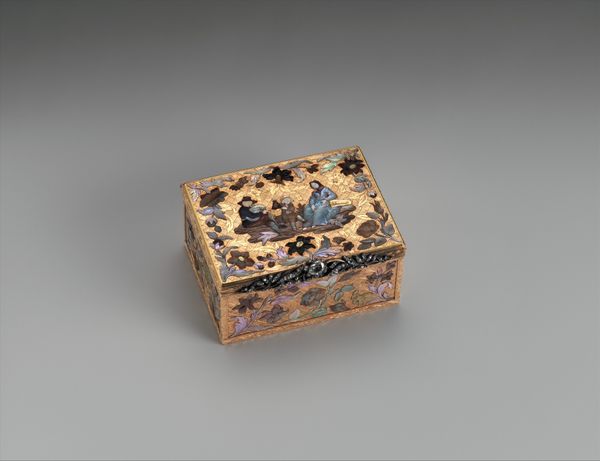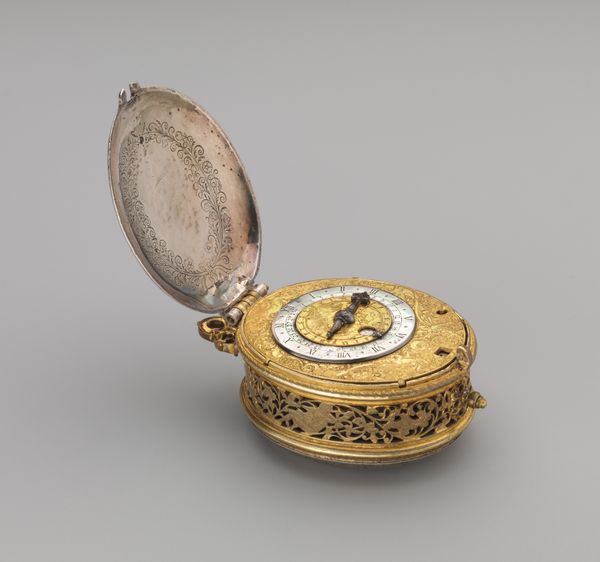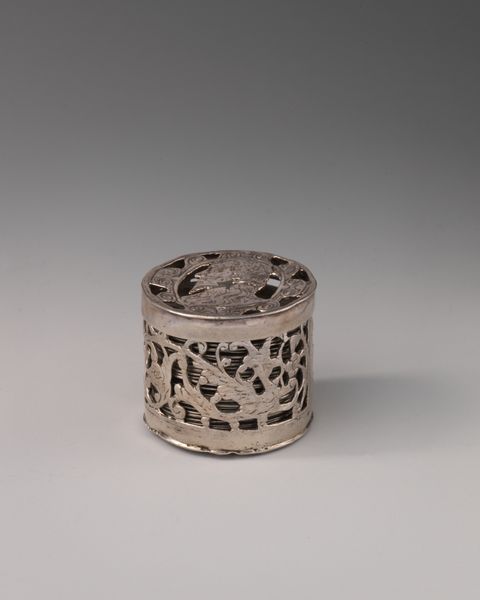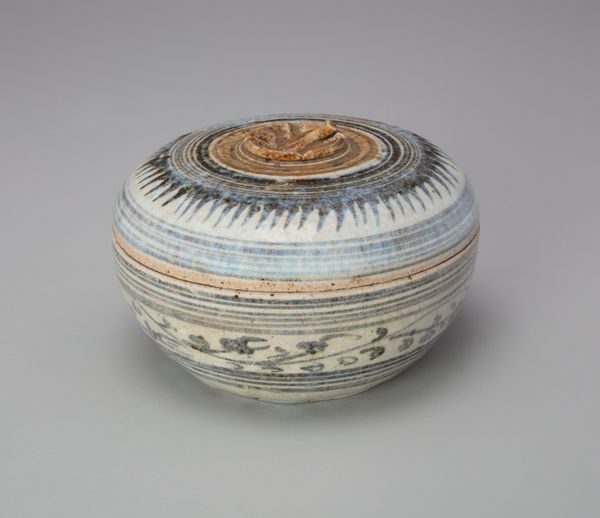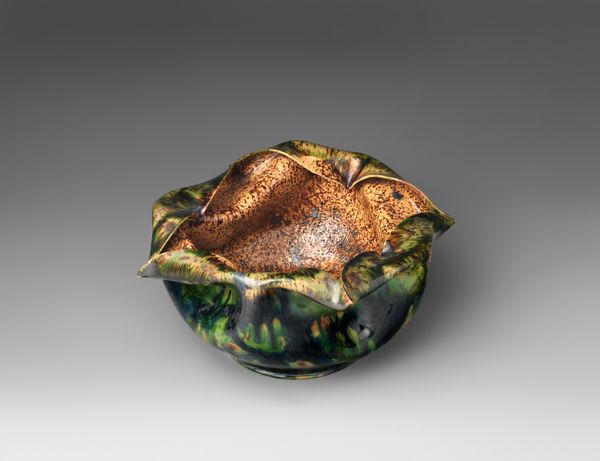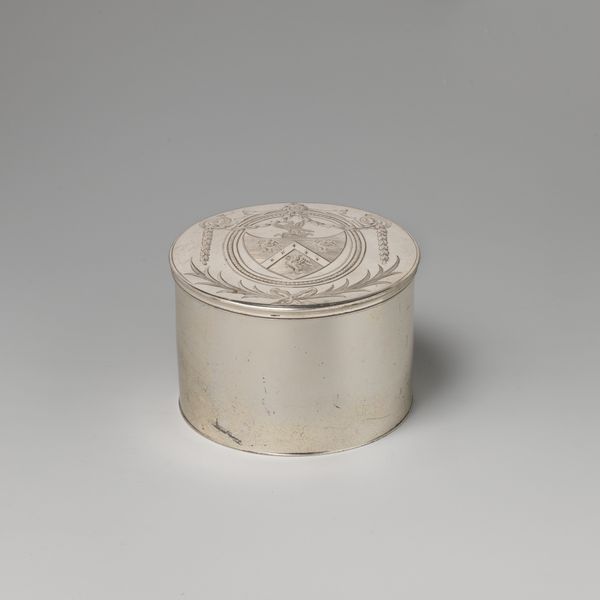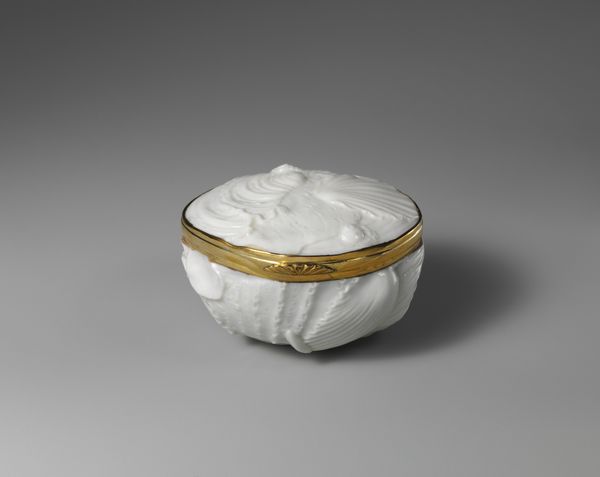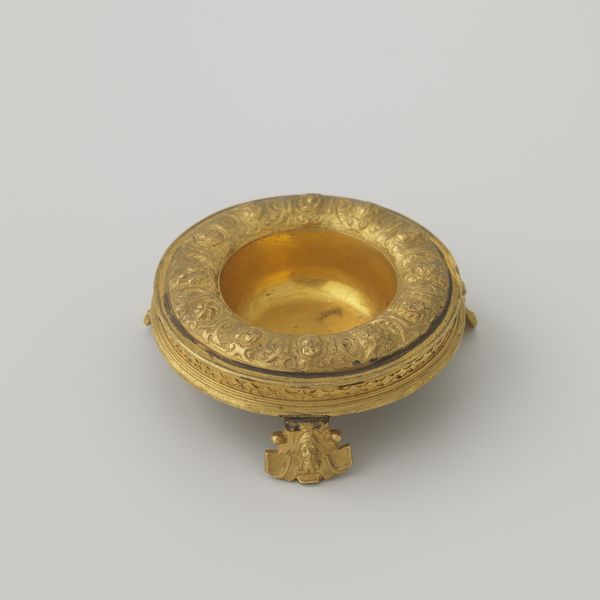
silver, sculpture
#
silver
#
baroque
#
sculpture
#
decorative-art
#
rococo
Dimensions: Overall: 2 1/4 × 4 1/8 × 2 1/2 in. (5.7 × 10.5 × 6.4 cm)
Copyright: Public Domain
Curator: Immediately, the iridescent shell and intricate silver work give off an aura of extreme luxury and privilege. Editor: Indeed, this object is known as a "Table snuffbox", crafted sometime between 1740 and 1755. It's currently held in the collection of the Metropolitan Museum of Art. It is made from silver. Curator: Snuff, itself a symbol of elite culture and global trade routes, transformed into an elaborate stage! How does this little tableau speak to issues of gender and power dynamics within 18th century French society? Editor: The very design underscores this: the shell, naturally beautiful but ordinary, becomes extraordinary through human intervention. The addition of meticulously crafted silver embellishments—scenes possibly lifted from classical mythology—raises questions about the era's obsession with status. Snuff, in its own right, quickly evolved to be a highly stylized, public performance steeped in rigid class rules. Curator: That transformation fascinates me. The shell's original, organic form versus the human desire to categorize and command it. I see the tension between the natural world and the increasingly artificial structures that society imposes upon it. Were these commissions often presented by men to other men as political favors? Editor: The ritual surrounding snuff and its accessories were undeniably enmeshed in social capital. Such gifts affirmed and solidified networks of power. There's something deeply ironic that this status was performed via the nasal cavity... Curator: The tiny sculptural details give it almost theatrical sensibility. It's so much more than just functional item. The images embossed upon it are not there accidentally. What narrative statements do these allude to at that time? What’s deliberately absent? Whose story is not represented here? Editor: The overt symbolism is a minefield, prompting endless debates. How, then, did these everyday objects perpetuate hierarchies, defining who was 'in' and who was excluded in the glittering social circles of the period? Curator: So, beyond aesthetic enjoyment, pondering these layered implications seems a vital means through which to critically address social injustices past and present. Editor: Absolutely, I agree, looking closer, it challenges viewers to reconsider material culture as instruments deeply connected to prevailing powers of any age.
Comments
No comments
Be the first to comment and join the conversation on the ultimate creative platform.
